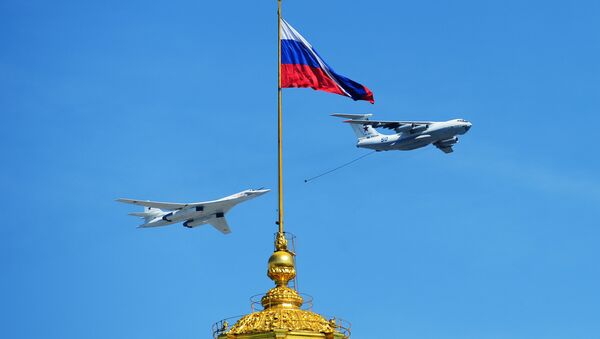Nicknamed the "White Swan" by its pilots, the Tu-160 is a supersonic, variable-sweep wing heavy strategic bomber designed by the Tupolev Design Bureau. Although some civil and military transport aircraft are larger in terms of their overall dimensions, the Tu-160 is the largest combat aircraft the world has ever seen.
In service since 1987, it is the heaviest combat aircraft in the world, with the highest maximum take-off mass among bombers.
After a full modernization, the aircraft were re-accepted into Russian service after testing in late 2005. The upgrade combined the capacity to launch two new conventional versions of the Kh-55 long-range nuclear cruise missile — the Kh-101 and the Kh-555.
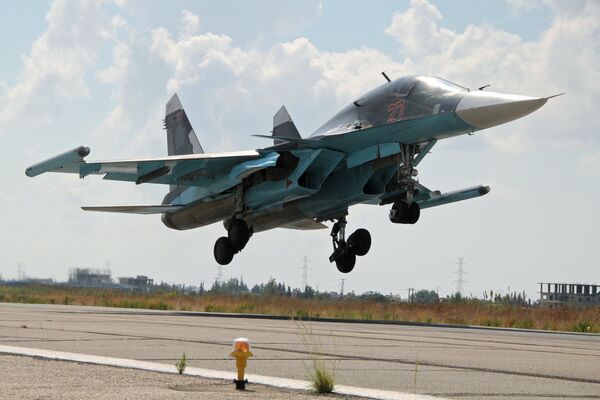
As for the Su-34 fighter bomber, it is a 4++ generation jet, which can accelerate to a maximum speed of 1,200 miles per hour and can fly a maximum range of 2,500 miles without refueling.
The Su-34 is designed to deliver high-precision strikes on heavily guarded targets in any weather conditions, day or night, and fields weaponry including a 30mm GSh-301 cannon, rockets, air-to-air, air-to-ground and anti-ship missiles, as well as guided and unguided bombs.
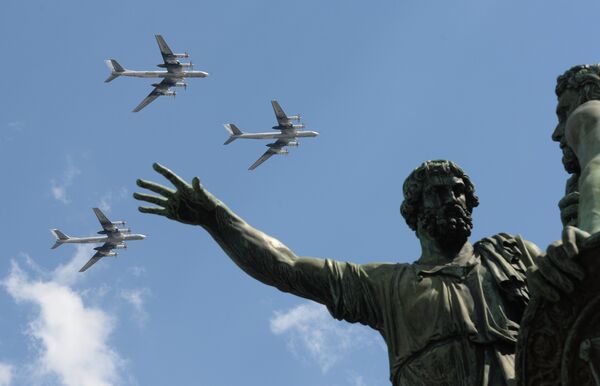
Notably, both the Tu-160 and the Tu-34 successfully took part in Russia's anti-Daesh air campaign in Syria, alongside the Tu-95, a four-engine turboprop-powered strategic bomber and missile platform.
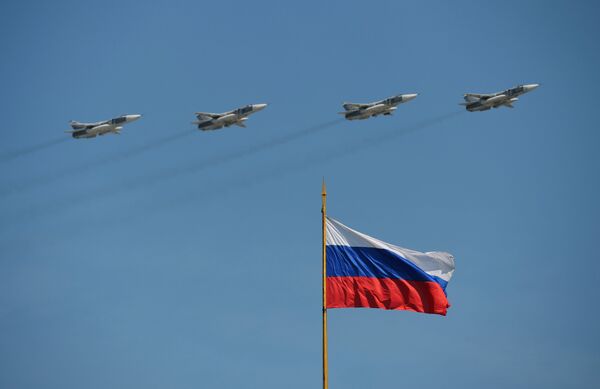
The Tupolev Tu-95 entered service with the Soviet Air Force 11 years after the first Soviet victory parade, in 1956. In 2010, a squadron of Tu-95s traveled 30,000 kilometers within 43 hours, refueling four times in midair.
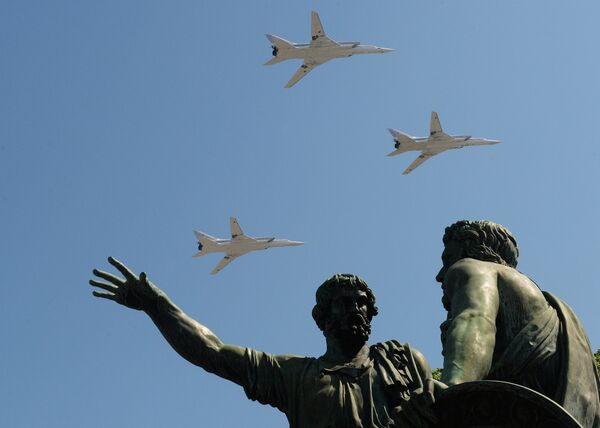
Codenamed the "Bear" by NATO, the Tu-95 is also the world's fastest turboprop-powered aircraft. After its modernization, the Tu-95 is expected to stay in service with the Russian Aerospace Forces until 2025.
Like the Tu-160 and the Tu-95, the Su-24 took part in the air campaign that Russian launched against Daesh terrorists in Syria in September 2015.
Last but not least is the Tu-22M3, a supersonic, variable-sweep wing long-range strategic and maritime strike bomber. The aircraft is the latest modification of the Tu-22 family, and has remained in service with the Russian Armed Forces since 1989.

